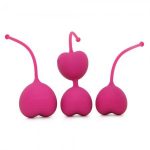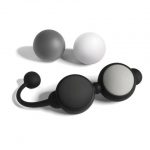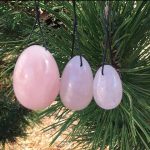For every woman who has ever wondered what and why, when it comes to kegel exercises here are some quick answers to your questions as well as some easy tips to get started.
What are Kegels exercises?
Kegels are named for Dr. Arnold Kegel. In 1942 he published a study based on 18 years of research on the pc(pubococcygeal ) muscles also commonly referred to as the pelvic floor. This muscle group in particular support the organs in your pelvic area as well as the urethra, and your bowels. Kegel exercises are designed to strengthen the pc muscle group.
Why Kegel?
Kegels can help with two things of greater importance to women. The first is Urinary incontinence which is any unintentional loss of urine due to laughter, jumping, urgency or other factors. In cruder terms peeing on yourself. Many things can lead to incontinence the two most common are child birth and ageing. For women who received an episiotomy during childbirth and the subsequent ‘Husband stitch’ are more likely to have issues with weak pc muscles as this incision can cause permanent nerve damage. Amazingly Dr. Kegel noted that women who practiced the exercises consistently started to see some relief and change in symptoms after about 2 weeks.
The second is the one women get most excited about, increased sexual enjoyment and Orgasms!! Stronger pc muscles increase your ability to achieve an orgasm and bonus they can also increase the intensity. They also increase the overall satisfaction of your sexual encounters. If you were unlucky enough to have received an episiotomy during childbirth the subsequent inability or difficulty in achieving orgasm can also be positively affected by kegels.
Great! Where do I get started?
As always with any new routine it never hurts to discuss it with your healthcare professional, especially if you have any specific health concerns.
- If you are not certain how to kegel or where your pc muscles (pubococcygeus) are, the next time you urinate stop the flow midstream. These are the muscles you need to engage. Please note this not where or how you want to exercise these muscles this is ONLY to orient you to their action. If you try to exercise your muscles regularly while urinating you can cause yourself some serious health problems so don’t so it!!
- Start your new kegel regimen with around ten reps, twice a day. Squeeze as you inhale and relax as you exhale.
- If you are new to kegels the best position to start in is on your back with your knees bent. This helps prevent you from over strengthening the portion of the muscles that control the bowels and can lead to constipation.
- Kegel balls can be helpful in developing and maintaining the pc muscles. It is best to purchase a set that varies in size. always start with the biggest ball and work your way down.
- Yoni eggs just as kegel balls can provide some resistance while training your muscles. They vary in size and as with the balls start with the larger one and work your way down.
- If you choose to use yoni eggs make sure they have a hole drilled so that you can thread unwaxed dental floss to assist with removal. With Kegel balls look for some that have a strap for removal as well.
- Weighted Kegel Balls can also help build and maintain pc strength, Make sure to start with the lightest one.
- There are several apps that can help you create and maintain a kegel routine
- A fun way to use your kegel weights or balls is to incorporate them into masturbation.
- Stronger pc muscles can also decrease the occurrence of urinary incontinence which becomes more common as women age.
Tried these tips before and still not making the progress you’d like ask your doctor if you may be a good candidate for physical therapy. A physical therapist can better guide you through the process of correct muscle activation and accurately assess your progress.



